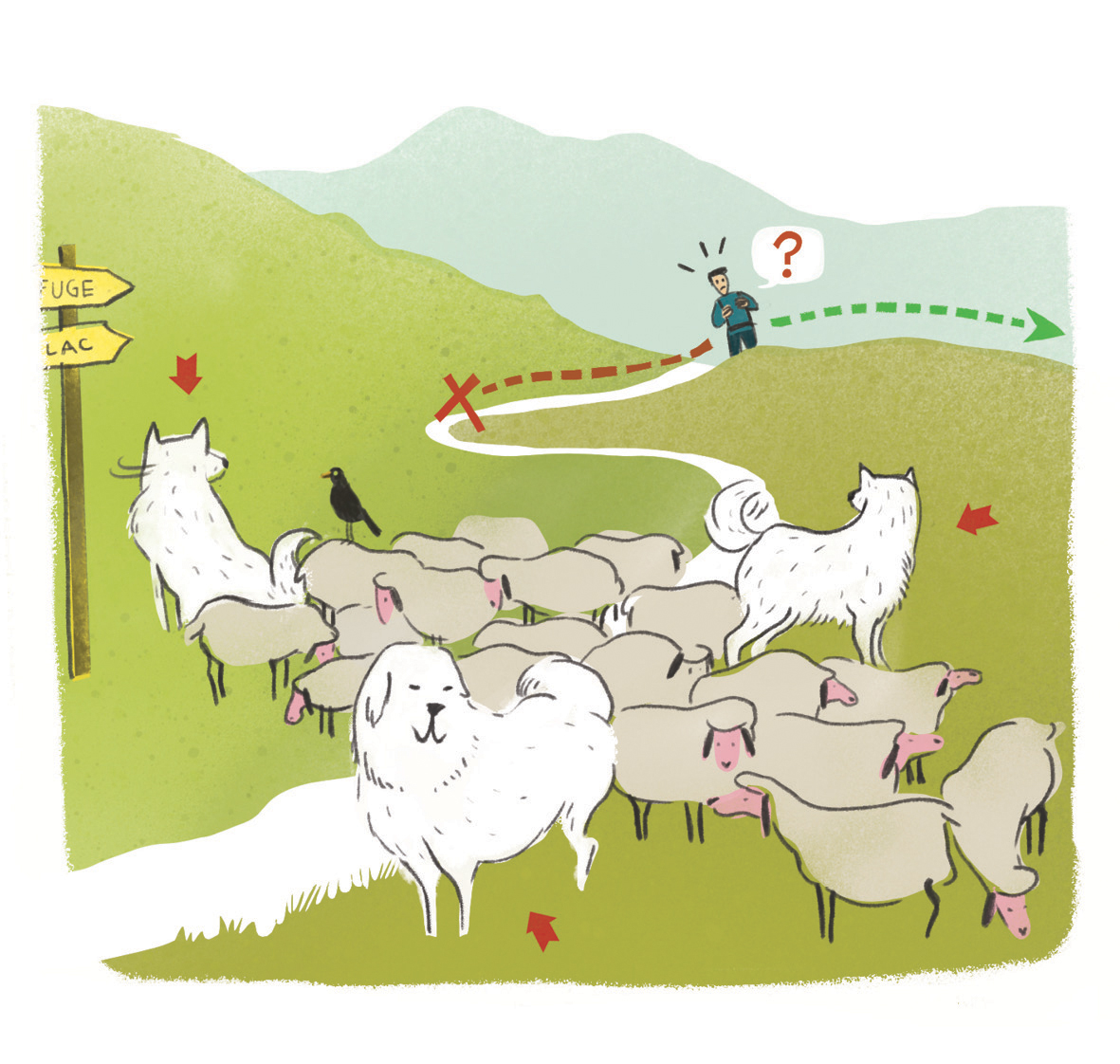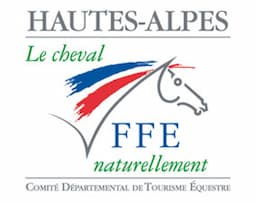From Embrun to La Montagne
4 points of interest
 Water
WaterThe Durance
The Durance is the most important river in Provence and the third largest tributary of the Rhône, behind the Saône and the Isère. It rises in the Hautes-Alpes in the municipality of Montgenèvre and is soon joined by the Clarée and Guisane rivers, which flow past it despite being longer and having a greater flow at the confluence point. The Durance valley has been a major communication route for centuries, and its capricious nature has been controlled by the artificial lake at Serre-Ponçon and a canal running downstream. The old proverb from the Ancien Régime, which once claimed that "the three scourges of Provence are the Mistral, the Durance and Parliament", has now been forgotten, and the Durance now brings nothing but life to the land it irrigates.
. Pastoralism
PastoralismThe pastre
This is the Provençal word for shepherd. The trail got its name because of its many traces of pastoral activity along the way. Among other things, you can see the remains of ancient shelters known as muandes. These were used as stopovers between the farm and the mountain pastures during the transhumance up to the summer pastures at the start of the summer and during the transhumance to lower pastures in the autumn.
. Architecture
ArchitectureChurch of Marie-Madeleine in Les Orres
Characteristic of Hautes-Alpes architecture, it was built around 1501 and is remarkable for its size and painted decorations. Flora
FloraThe Larch
The Hautes-Alpes offers all the right conditions for the development of larch and is home to half of France's larch trees. The larch needs open, sunny land and colonises abandoned plots: it is a "pioneer" species. It can live for 500 years and is the only softwood to shed its needles. Its rot-proof wood can be used to make gutters, fountains and shingles. Its strength makes it ideal for carpentry and its colour also makes it popular in joinery.
Description
- Continue on the Chemin de Chadenas which turns into a road and then take a right fork onto Rue de la Levée (not signposted, follow "All directions") then left onto Avenue des Acacias. After the veterinary surgery, turn right down Chemin des Cerisiers, which leads to Avenue de la Clapière: turn right and cross at "La Truite qui Parle" to take Impasse des Merisiers, which leads to Promenade de la Digue (known as "Route de la Digue").
- Turn left, follow the Durance to Pont Neuf (D467 and D994D) and cross it on the central lane.
- At the Pont Neuf exit, turn right onto the road then cross to take the GRP at the foot of the green pylon: a grassy track between meadow and woodland. After crossing the torrent des Horts, climb up through the undergrowth on the GRP. At the top, enjoy some beautiful views of Lac de Serre-Ponçon and continue along the GRP, sometimes through fields, sometimes in marl, sometimes in undergrowth. As you approach the Piste des Gaillards, a large step made of rock and scrap metal forces you to take a diversion via the stream on the right. Continue past the GAEC du Méale and then the route aux Charniers.
- Leave the GRP by turning left onto the track towards the farm and continue on the path to the cemetery. Join the road, pass above the cemetery and then, at the hairpin bend, take the path on the left and head alongside the church to join the GRP on the Route des Gaillards (D39A) towards Les Fachins.
- Follow the GRP until Combe Noire, when you come out on the Clotasses forest track (some lovely viewpoints and natural sites for picnicking before Combe Noire, and an equipped picnic or bivouac area at the Forêt car park, 700m from the junction with the bridleway).
- Continue on the GRP trail towards Les Orres, county town. Continue along Rue du Commun and then Rue du Fort and continue downhill (under the museum) to cross the D40 (on the right).
- Descend to the bridge on the GRP. At the bridge, take the road on the left to cross the torrent des Charances and take the path on the left (PR) that climbs "Sous la Pinatèle" towards Le Mélezet. To avoid a mini footbridge, leave the PR by taking the log steps and then head along the edge of the field.
- When you reach the electricity poles, head back down on the grassy path that ascends to Mélezet. Then, on the road, turn right towards the school and continue towards Route de la Mazelière.
- On the Grande Rocade (GRP), in the Forêt de la Mazelière, pass the waterfalls (picnic areas set up at Pont de la Mazelière, Source de Mouret, and Barnier. Others may prefer to improvise before and after the Pont des Corbières, on the draye overlooking Gaudissart, before and after the Cime de la Plate...) and continue on the main flat track towards the well signposted gîte de La Draye. Remarkable larch.
- Departure : Club Hippique Alpin Serre-Ponçon
- Arrival : Gîte de la Draye
- Towns crossed : Puy-Sanières, Embrun, Saint-Sauveur, Les Orres, Baratier, and Crots
Altimetric profile
Recommandations
Well-trained horses (gradients, variable terrain, duration, changing climate);
Inquire before taking a shortcut;
Doable from mid-May to mid-October.
 In mountain pastures, protection dogs are there to protect the herds from predators (wolves, etc.).
In mountain pastures, protection dogs are there to protect the herds from predators (wolves, etc.).
When I hike I adapt my behavior by going around the herd and pausing for the dog to identify me.
Find out more about the actions to adopt with the article "Protection dogs: a context and actions to adopt".
Tell us about your meeting by answering this survey.
Information desks
Tourist office Chorges
Grand rue, 05230 Chorges
October to may : Monday to Saturday, 9.00 - 12.30 & 13.30 - 17.00.
April, may, june & september : Monday to Saturday, 9.00 - 12.30 & 14.30 - 18.00
July and August : Monday to Saturday, 9:00 – 12.30 & 14.30 – 19.00 Sunday 9.30 – 12.30
Closed on Thursdays outside French holidays’ periods
Closed on French national holidays, except 14th of July and 15th of August
Source

Report a problem or an error
If you have found an error on this page or if you have noticed any problems during your hike, please report them to us here:
